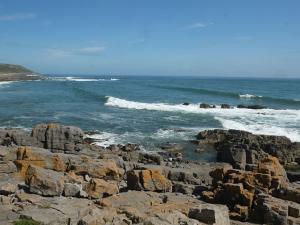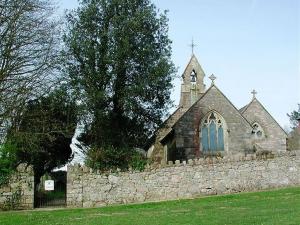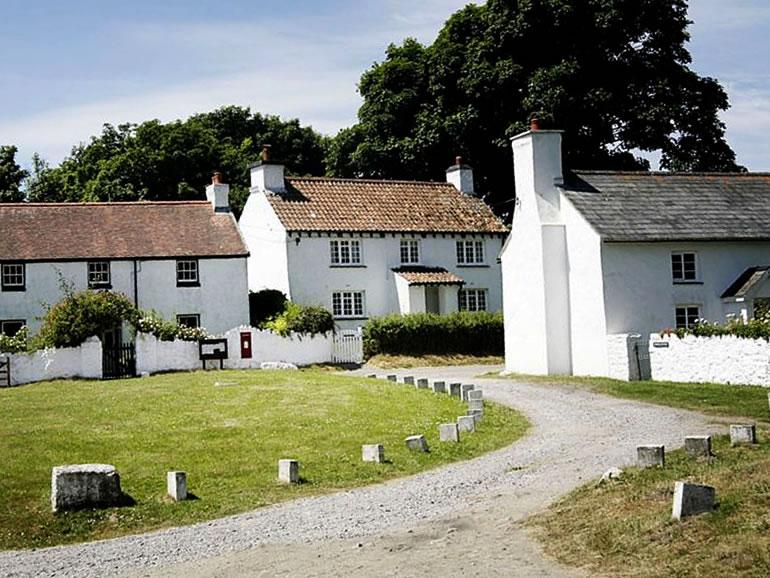Penrice is almost a hidden village, tucked in the centre of a narrow, plunging and meandering woodland lane. Little changed since the 18th Century, the village population stands at around 50. Very quiet and peaceful, it is difficult to imagine that this tiny hamlet was once the centre of Gower commerce a few centuries ago.
Penrice once held as many as four annual fairs on its village green as well as two weekly markets. Very rumbustuous and popular affairs, these had to be later relocated to nearby Reynoldston when they outgrew the green. The small stone that still lays embedded in the green is known as the 'crying stone' as it was from this spot that the opening of the markets and fairs were announced. The stone's original function was to support the village cross but this disappeared sometime in the 18th Century.
Although small, there are several noteworthy features of the village. St. Andrew's Church is a very picturesque building that is often over run with local sheep and wildfowl. There is also an intriguing gravestone near the entrance to the church that is known as the 'murder stone'. The inscription on this stone is now worn with the passage of time but is well worth a moment's deciphering as it recalls a true Gower mystery!
A large, if somewhat overgrown, Norman fortress earthwork can be seen in the nearby Mounty Bank. This is a ringwork construction some 30 metres wide, its raised oval platform protected by a deep encircling ditch. Unfortunately the site is enclosed with private property. The remains of a 16th cornmill, however, can be explored in Mill Wood. The mill even retains three of its large millstones. For those with an interest in war time history, a visit to the area's well preserved air raid shelter will provide an interesting point of exploration. The shelter has recently been recommended for protection as a monument of national importance.
Penrice Castle, located on the private land of Penrice Estate, is the largest of the peninsula's Norman Castles. Although it cannot be explored, there is a footpath that runs directly past this outstanding building. This footpath dissects Penrice Estate and offers an otherwise forbidden glimpse of the Penrice mansion, (pictured above) and the fabulous artificial lake, now a well known heronry.
Penrice mansion was build circa 1775 by Thomas Mansel Talbot. The imposing building was designed by the architect Anthony Keck, but is said to contain much of Talbot's original ideas. The mansion, constructed of Bath stone, took over six years to complete and has four storeys. Christopher Methuen-Campbell demolished the mansion's Victorian wing in 1967/8 (an 1890's extension added by Emily Talbot) but the original concept of the building's design still remains very much intact. The present day owner and incumbant of Penrice Castle is Thomas Methuen-Campbell.
The large, formal estate is planted with some magnificent architectural plants, much of which was planted from the Margam Estate and leaves the rambler wishing that the estate as a whole could be opened to the public.
There is also a fine granary, which is in a good state of preservation.















